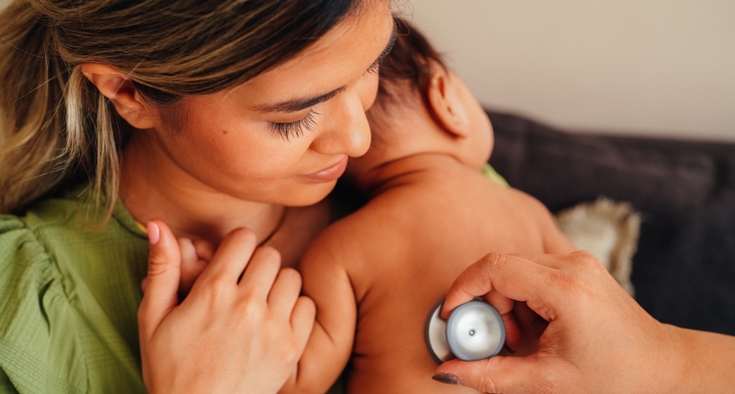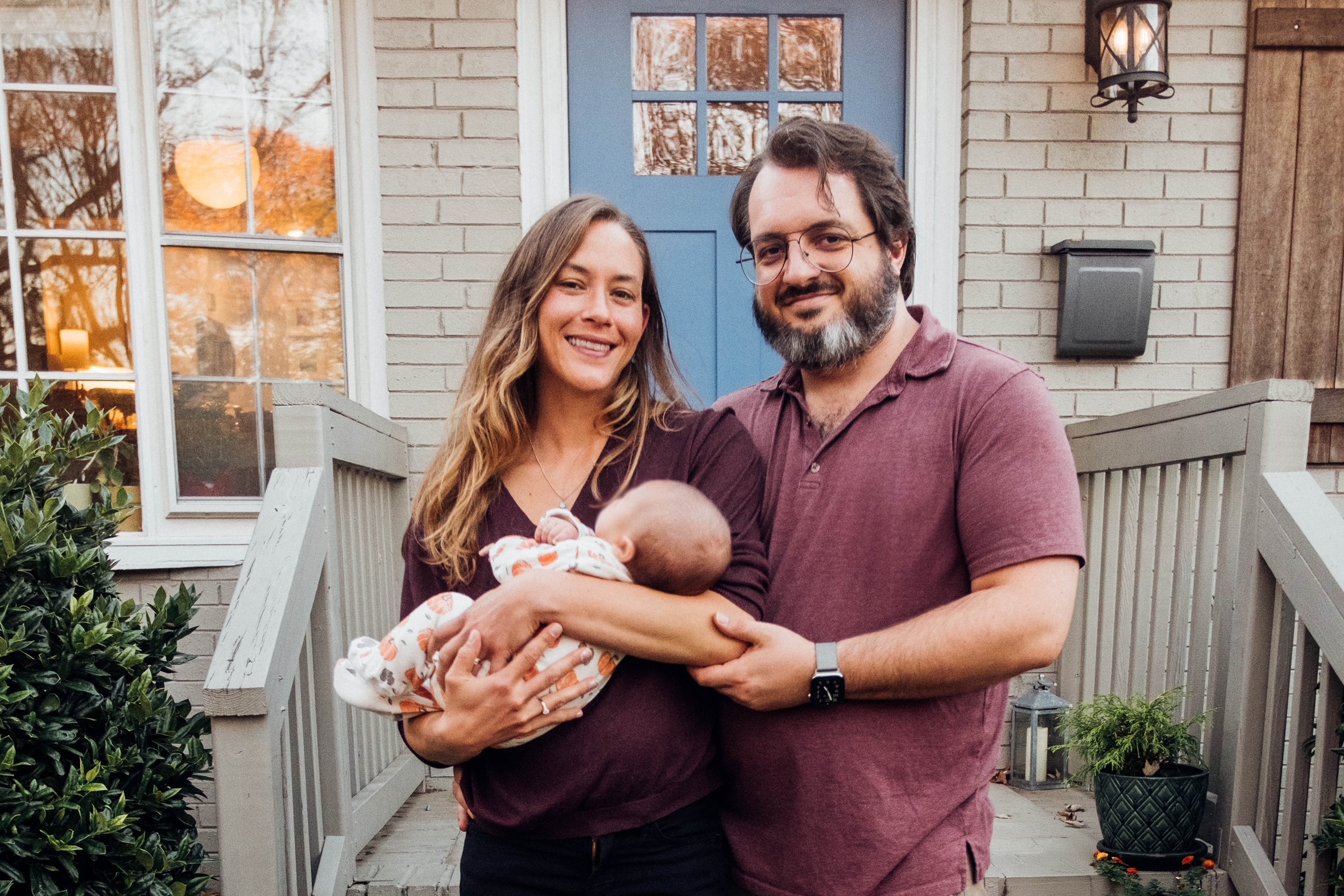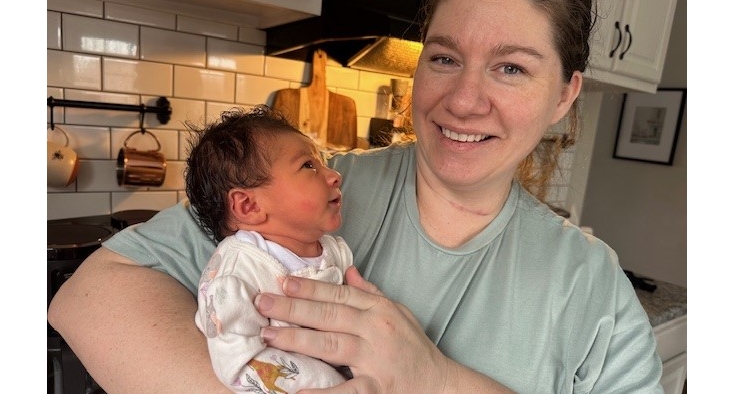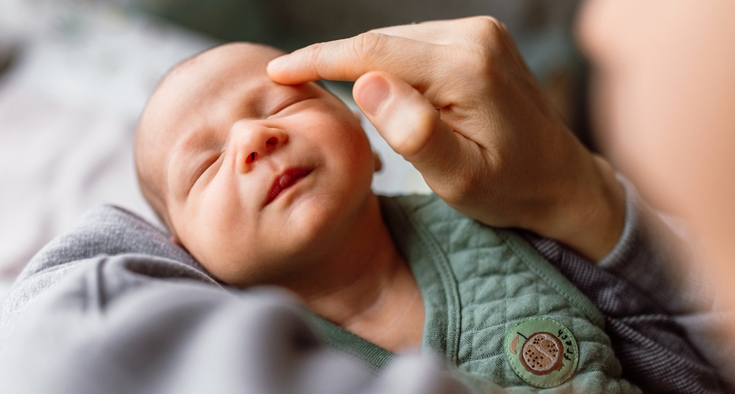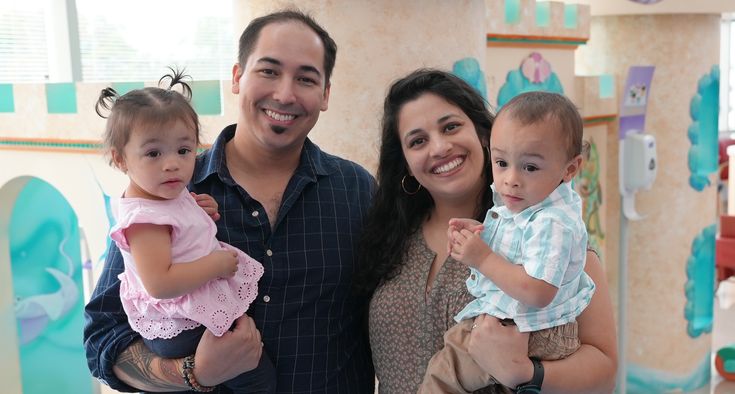I still feel sick when I think about it. It happened midday December 15, 2024. For a moment, I thought my baby was dead.
I was at home with my husband, who was helping me carefully adjust our 2-month-old daughter, Claire, against my chest in an infant carrier. Suddenly, she went pale and limp. She seemed lifeless.
I cradled her cheeks and loudly said, “Claire Bear! Claire Bear!” No response. Her face looked off – slack and her head was lolling. “Is she breathing?” We didn’t think so.
Panicking, I pulled her out of the carrier and laid her on the couch, still calling her name. “Should we start CPR? I’ll call 911. You start CPR.” It all happened so fast. My husband had just started chest compressions while I started talking on the phone to a dispatcher – then Claire suddenly perked up. Within seconds, she was fine. She was moving again and blinking at us. She seemed confused by our behavior.
The fire department team came and said she was fine. The paramedics came and said she was fine. The Novant Health emergency room doctor ran tests and said she was fine. The diagnosis: BRUE: Brief resolved unexplained event.
Find the best pediatric care near you.
Claire’s case fit the classic definition of a BRUE:
- She went limp.
- She looked pale (some babies can have blueness of lips or face).
- She was unresponsive.
- She appeared to stop breathing (or was breathing irregularly).
- The episode lasted no more than 30-60 seconds.
“With a BRUE, the episode is totally resolved and the baby gets back to their normal level of alertness and activity immediately after,” said Dr. Sara Steelman, our emergency room doctor and the medical director of Novant Health Hemby Children’s Hospital Emergency Department.
“There’s no explanation for it, meaning they didn’t fall or have anything happen to them prior to this event. This can apply to non-premature babies between 60 days and 1 year old. Luckily, BRUEs are not going to result in a bad outcome.” Steelman talked me through seven more facts to know about BRUEs.
Per the name, it’s impossible to know for sure what causes a BRUE.
Parents feel responsible for everything with their child, and a BRUE can feel traumatic. A doctor may reassure them that a BRUE is absolutely not the parents’ fault. We can theorize that an episode can be caused by reflux, where stomach acid flows up into the esophagus and throat, or an episode with the vagus nerve, which controls signals around digestion, breathing and heart rate, and can cause fainting when it’s too active.
Because you can’t immediately tell the difference between a BRUE and a life-threatening event, it’s appropriate to think about initiating CPR.
BRUEs are brief, so typically by the time parents get it together to initiate CPR, it’s totally resolved. So technically a BRUE wouldn’t require CPR. It’s totally appropriate to call 911. But it’s not required if the baby gets back to normal.
ER assessment is not automatically necessary.
While some paramedic teams may recommend evaluation in the emergency room, if the baby meets all the criteria for a BRUE, there’s really no testing that’s necessary. The doctor may do a full medical history and physical, talk to the parents to clear any concerns like potential maltreatment or underlying health issues, and watch the baby for an hour or two to monitor pulse and oxygen levels.
The doctor will also provide education about BRUEs – because most people have never heard of them. They’re not that common, but there are not clear statistics on how often they occur. Some practitioners may order an electrocardiogram (EKG) to check for heart conditions, or a chest X-ray to rule out pneumonia.
Even though a BRUE involves irregular breathing, there’s no concern about brain damage as a result.
For brain damage to occur, the baby would have to go five minutes with no oxygen to the brain. And five minutes is forever if you’re with someone who’s not breathing. There’s a big difference between that and what would classify as a BRUE.
A baby who experiences a BRUE is not at a higher risk of SIDS, or sudden infant death syndrome.
While a BRUE is sudden and unexplained, it has absolutely no connection to sudden death.
The risk of a baby experiencing a BRUE a second time is less than 10%.
If this were to start happening regularly, parents would be advised to get specialized follow-up and additional testing to see if there is an underlying health problem. A pediatrician could help with this process.
While you can’t exactly prepare for a BRUE, it’s always helpful to be educated and prepared for an emergency.
An infant CPR course is good to take, including instructions on how to handle choking. It’s also always helpful to have emergency contact numbers at the ready – 911, your pediatrician.
My husband and I knew infant CPR from a virtual Novant Health class, so we had steps to follow in an emergency. Luckily, this turned out to not be a true emergency. Still, Claire’s BRUE was the worst experience of my life so far. For hours, I thought it was my fault. It re-triggered catastrophic thinking and obsessive-compulsive tendencies around continually checking to make sure she was OK.
But we had the best possible outcome – Claire was evaluated and found to be perfectly healthy and unlikely to experience this again. The doctor’s theory was that she fainted due to an awkward position in the carrier – a vagal nerve episode. I couldn’t look at that carrier for a month.
Now, five months into being Claire’s mom, I’m still anxious and often hypervigilant, but I’ve relaxed a lot, too. We’re back to infant-carrier usage for hiking, shopping and vacuuming. I try not to let worry override enjoyment, and she brings me so much joy. I try to remind myself: A lot of what happens to our children is out of our control, but education





